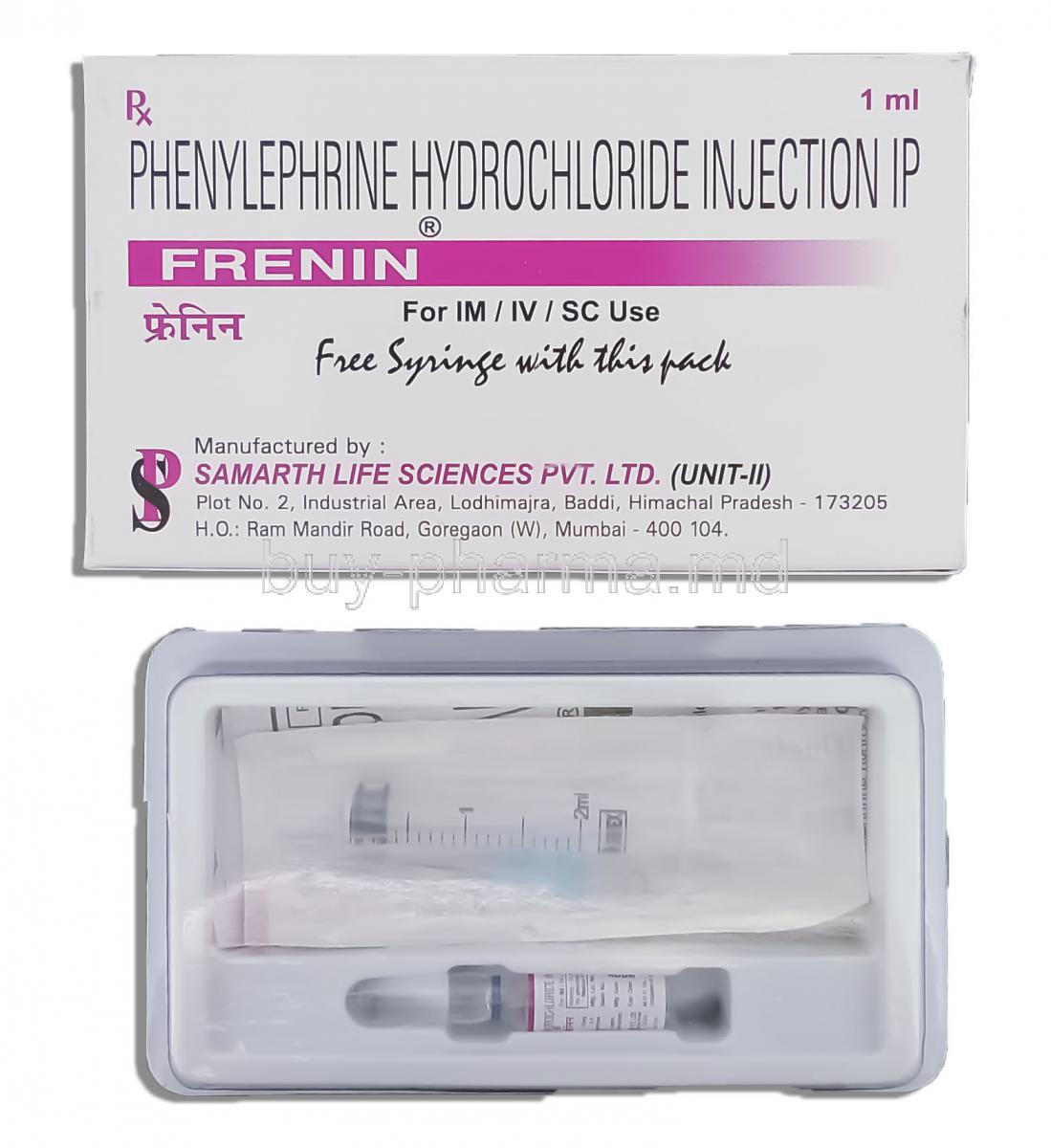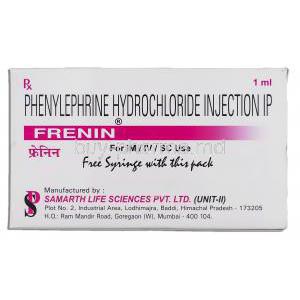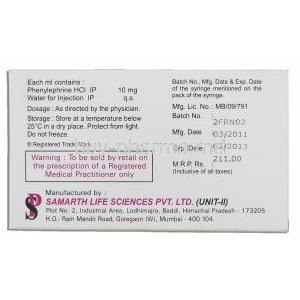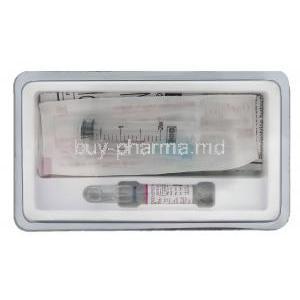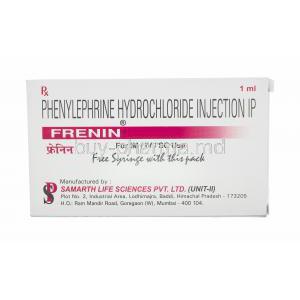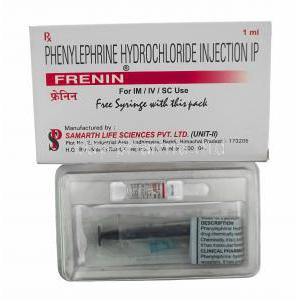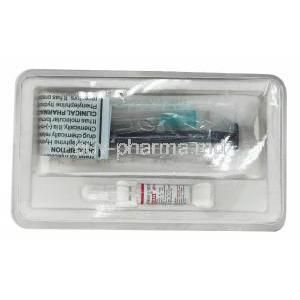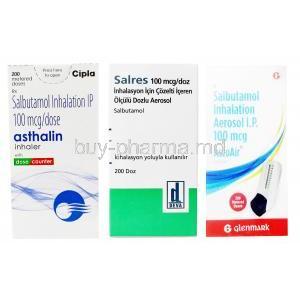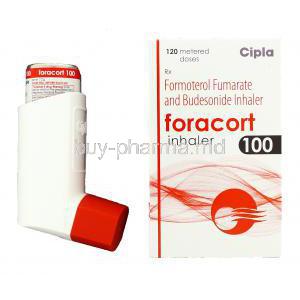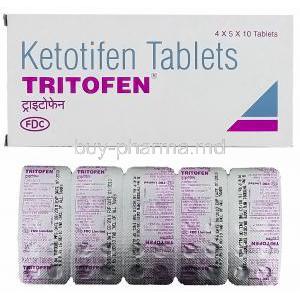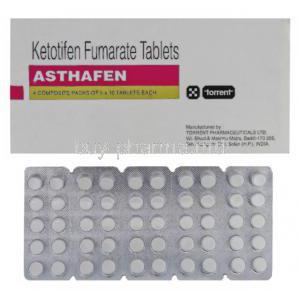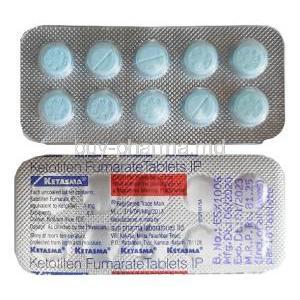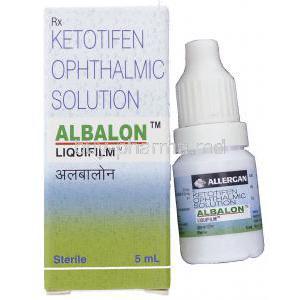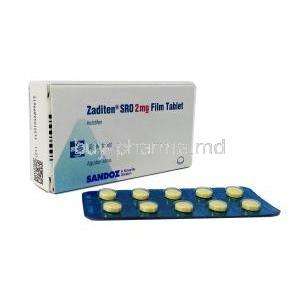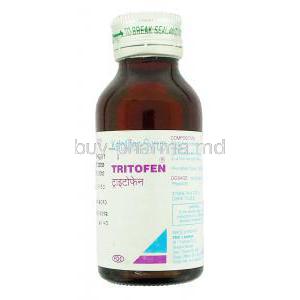Phenylephrine Injection
- Introduction to Phenylephrine Injection
- Composition of Phenylephrine Injection
- How Phenylephrine Injection Works
- Uses of Phenylephrine Injection
- Off-Label Uses of Phenylephrine Injection
- Dosage and Administration of Phenylephrine Injection
- Side Effects of Phenylephrine Injection
- Interactions of Phenylephrine with Other Medications
- Warnings and Contraindications
- Careful Administration of Phenylephrine Injection
- Important Precautions When Using Phenylephrine
- Administration to Specific Populations
- Overdosage of Phenylephrine Injection
- Storage and Handling Precautions for Phenylephrine
- Conclusion
Introduction to Phenylephrine Injection
Phenylephrine1, a drug that raises blood pressure, is crucial in medical treatments. It is primarily used to increase blood pressure in cases of blood pressure and has an exciting and vital history. Acting as an alpha-one adrenergic receptor agonist, it constricts muscles in blood vessels, making it valuable for managing circulatory shock and other critical conditions. The journey of Phenylephrine started in the 20th century when it was created as a possible alternative to epinephrine. However, its unique properties quickly set it apart. They have made it an integral part of medical practice. Its development paved the way for targeted drug design. It represented a significant milestone in pharmaceutical innovation.
Composition of Phenylephrine Injection
Hydrochloride is the main component of Phenylephrine Injection, which acts similarly to natural catecholamines by targeting alpha-adrenergic receptors. In addition to the ingredients, the formulation also includes stabilizers, buffers, and isotonic agents that work together to improve the stability and effectiveness of the medication. The careful balance between these ingredients determines the characteristics of Phenylephrine Injection. This formulation represents a combination of scientific knowledge and precise measurements to ensure optimal therapeutic results.
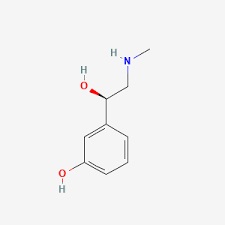
How Phenylephrine Injection Works
Phenylephrine Injection works2 in a way mainly targeting the alpha one adrenergic receptors found in smooth muscles lining blood vessels. When administered, it causes the blood vessels to constrict, leading to increased vascular resistance and blood pressure. The ability of This drug to selectively activate these receptors makes it effective in treating episodes of hypotension.
Phenylephrine has a profile characterized by its fast onset of action and short duration, making it a suitable choice for emergencies. Its pharmacokinetics involve absorption, distribution, metabolism, and excretion, with each phase contributing to its therapeutic effect. The drug's bioavailability and half-life play roles in determining the appropriate dosage regimen for precise patient management.
Uses of Phenylephrine Injection
Phenylephrine Injection8, a medication in critical care medicine, is primarily used for managing low blood pressure. Its ability to constrict blood vessels makes it invaluable as it helps restore vascular tone and raise blood pressure. Besides its purpose, Phenylephrine has a wide range of medical uses, from aiding eye surgeries by dilating pupils to improving the effectiveness of spinal anesthesia by counteracting low blood pressure.
- Managing Blood Pressure: The drug's quick action in increasing vascular resistance and raising blood pressure is crucial for treating shock and other conditions with low blood pressure.
- Various Medical Applications: Phenylephrine's versatility extends to providing pupil dilation during eye surgeries and enhancing the effectiveness of anesthesia by addressing low blood pressure.
Off-Label Uses of Phenylephrine Injection
While the approved uses of Phenylephrine Injection are widely recognized, its off-label applications are also worth mentioning. It is commonly used in situations where its ability to constrict blood vessels can be helpful, even though these uses are not officially endorsed. This includes managing types of shock nasal congestion and as a supplementary treatment for septic conditions.
Numerous clinical studies have shed light on the benefits of Phenylephrine in these off-label scenarios. Research has shown that it effectively stabilizes hemodynamics in complex clinical situations, highlighting its versatility in medicine.
Dosage and Administration of Phenylephrine Injection
Careful adherence to dosage guidelines is essential when administering Phenylephrine Injection to balance effectiveness and potential risks.
- The recommended dosage for adults in acute hypotensive states typically falls between 100 and 180 micrograms, depending on the indication.
- The method of administration is equally essential, with intravenous injection being the most commonly used technique. To ensure outcomes and minimize adverse effects, it is crucial to individualize the dosing of Phenylephrine based on patient response and clinical condition.
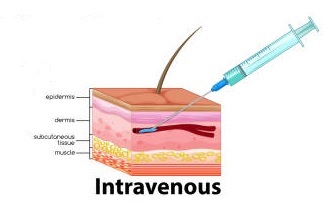
Continuous monitoring of blood pressure and heart rate during administration is imperative. When administering Phenylephrine, it is practiced to utilize intravenous bolus or continuous infusion methods for controlled and precise medication delivery. To achieve results while minimizing adverse effects, it is essential to closely monitor cardiovascular parameters and adjust the dosage based on therapeutic response.
Side Effects of Phenylephrine Injection
Although Phenylephrine Injection is effective in its use, it is not without its side effects1.
- Some common adverse reactions may include headaches, reflex bradycardia, and palpitations, but these can often be managed by adjusting the dosage or providing supportive care. It is essential to remain vigilant in identifying and promptly addressing these effects.
- There are also severe adverse reactions that can occur with Phenylephrine. These may include arrhythmias, pulmonary edema, and severe hypertension in susceptible individuals. Immediate medical intervention is necessary in cases. It's worth noting that while Phenylephrine Injection has benefits, it's essential to monitor closely for any potential side effects and respond accordingly.
Interactions of Phenylephrine with Other Medications
When Phenylephrine Injection is used alongside medications, its pharmacological effects may change.
- It's essential to be aware of how it interacts with MAO inhibitors, tricyclic antidepressants, and atypical antipsychotics, as it can potentially increase its effect and raise concerns about worsening hypertension. To handle these interactions, a careful approach to using medications is necessary. Some everyday drug interactions include an increased response when used with MAO inhibitors and reduced effectiveness when used with alpha-blockers.
- To manage the use of medications, it is crucial to review the patient's medication history thoroughly and consistently monitor their condition to minimize potential risks associated with drug interactions.
Warnings and Contraindications
Phenylephrine Injection should be used with caution as it may not be suitable for patients. People who have hyperthyroidism, severe hypertension, or tachyarrhythmias are at risk of experiencing adverse effects. It is also essential for individuals with a history of being hypersensitive to Phenylephrine or its components to avoid using this medication.
- Specific patient populations are more susceptible to risks associated with Phenylephrine. This includes individuals with disorders, hypertensive crises, and those who have previously experienced cerebrovascular accidents.
- Some conditions contradict the use of Phenylephrine. Patients with closed-angle glaucoma prostatic hyperplasia and those undergoing anesthesia with hydrocarbons should avoid using this medication.
Careful Administration of Phenylephrine Injection
Administering Phenylephrine Injection requires an approach, especially when dealing with vulnerable populations. It is essential to consider factors such as adjusting dosage and closely monitoring cardiovascular and neurological responses. The aim is to maximize the benefits while minimizing any potential risks.
- When dealing with populations like elderly patients, individuals with renal or hepatic impairment, or those with cardiovascular diseases, it becomes crucial to titrate the dosage carefully and maintain a vigilant monitoring process.
- To ensure administration, it is critical to continuously assess parameters such as blood pressure, heart rate, and signs of peripheral vasoconstriction. This vigilance plays a significant role in ensuring the utmost safety during treatment.
Important Precautions When Using Phenylephrine
While Phenylephrine Injection is a medication, it's essential to take certain precautions.
- Allergic reactions are rare. If they occur, the drug should be stopped immediately, and appropriate measures should be taken. Patients with existing medical conditions like diabetes, hyperthyroidism, or cardiovascular disorders need careful evaluation before receiving this medication. Identifying and treating any hypersensitivity reactions is crucial for the patient's safety.
- In cases where patients have preexisting medical conditions, it's essential to thoroughly review their medical history to avoid worsening their underlying needs.
Administration to Specific Populations
Special considerations must be taken when using Phenylephrine Injections in elderly patients, pregnant women, nursing mothers, and children. It is essential to account for the variations in pharmacokinetics and pharmacodynamics within these groups, which necessitates personalized dosing and increased monitoring.
- Elderly Patients: When administering Phenylephrine, starting with lower initial dosages and carefully adjusting them due to reduced physiological reserve and other medical conditions is essential.
- Pregnant Women and Nursing Mothers: The safety profile of Phenylephrine during pregnancy and lactation is not well established. Therefore, its use should be considered only if the potential benefits outweigh the risks.
- Pediatric Use: In patients, dosage adjustments for Phenylephrine should be done cautiously based on body weight and observed clinical response. It is crucial to monitor for any adverse effects.
Overdosage of Phenylephrine Injection
An excessive amount of Phenylephrine Injection can pose health risks. Typically, symptoms may include high blood pressure, slowed heart rate in response to reflexes, and potential irregular heart rhythms. The immediate focus of healthcare professionals is to stabilize blood pressure and ensure cardiac function. Healthcare providers must be prepared to provide cardiovascular support and symptomatic treatment when necessary.
- Identifying overdose symptoms promptly and intervening without delay is crucial for preventing life-threatening complications.
- When addressing long-term consequences, it is essential to monitor organ damage, particularly in the cardiovascular and renal systems, while providing appropriate supportive care.
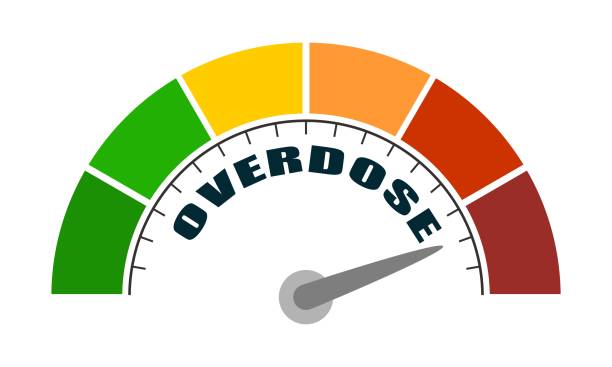
Storage and Handling Precautions for Phenylephrine
Storing and handling Phenylephrine Injection correctly is crucial to ensure its effectiveness and safety. The medication should be kept at room temperature, away from light and moisture. When preparing and administering the drug, following techniques and properly disposing of used or expired vials is essential to prevent accidental exposure or environmental contamination.
- Storage Instructions: Phenylephrine should be stored in a dry place at room temperature and away from direct sunlight.
- Safety Guidelines for Handling and Disposal: It is vital to adhere to safety guidelines when handling the medication, including wearing protective equipment and following proper disposal protocols.

Conclusion
To sum up, Phenylephrine Injection is a medication used in various medical situations, especially for managing low blood pressure. While it is generally safe when used correctly, it's crucial to be cautious with dosage, administration, and monitoring. Understanding its side effects, interactions, and contraindications is vital for using it safely.
Ongoing research and clinical experience will continue to improve the use of Phenylephrine Injection. Advances in formulation delivery methods and a deeper understanding of its effects on the body will enhance its effectiveness and safety profile, solidifying its place in medicine.
Phenylephrine Injection FAQ
- Phenylephrine when nursing?
- Phenylephrine when to take?
- Phenylephrine when to use?
- Phenylephrine when pregnant NHS?
- Phenylephrine when breastfeeding?
- Phenylephrine what to use instead?
- Phenylephrine what type of drug?
- What phenylephrine does?
- What phenylephrine do?
- What phenylephrine is used for?
- Phenylephrine how much to take?
- How phenylephrine decrease heart rate?
- How phenylephrine cause bradycardia?
- How phenylephrine induced bradycardia?
- How phenylephrine works for hemorrhoids?
- How phenylephrine works?
- Can phenylephrine cause diarrhea?
- Can phenylephrine cause bradycardia?
- Can phenylephrine cause anxiety?
- Can phenylephrine raise blood pressure?
- Can phenylephrine keep you awake?
- Are phenylephrine and sudafed the same?
- Are phenylephrine and pseudoephedrine related?
Phenylephrine when nursing?
Administering phenylephrine, through injection or by mouth, could potentially reduce the production of breast milk.
Phenylephrine when to take?
Phenylephrine is available in tablet form or as a solution for consumption. It can also be taken as a dissolving strip when necessary, with a dosage interval of approximately every four hours.
Phenylephrine when to use?
Phenylephrine is often employed to ease nasal irritation stemming from symptoms or allergic reactions like hay fever.
Phenylephrine when pregnant NHS?
During pregnancy, it is recommended by the NHS to steer clear of decongestants such as phenylephrine.
Phenylephrine when breastfeeding?
It's best to steer off using phenylephrine when breastfeeding, as it could potentially lower your milk supply.
Phenylephrine what to use instead?
Some popular substitutes for phenylephrine are pseudoephedrine (commonly known as Sudafed), oxymetazoline (sold as Afrin), and fluticasone propionate, which goes by the brand name Flonase.
Phenylephrine what type of drug?
Phenylephrine belongs to a group of drugs known as nasal decongestants. These drugs function by lessening the inflammation of blood vessels in the nasal passages.
What phenylephrine does?
Phenylephrine is commonly utilized to alleviate nasal irritation associated with symptoms such as allergies and hay fever.
What phenylephrine do?
Phenylephrine is commonly employed to provide relief for nose and sinus congestion due to various reasons, such as colds or allergies, by reducing inflammation in the nasal passages and ears to improve breathing comfort.
What phenylephrine is used for?
Phenylephrine is commonly utilized to alleviate nasal discomfort stemming from symptoms or allergies.
Phenylephrine how much to take?
For individuals aged 12 years and older, the recommended dosage is 10 mg taken orally every 4 hours with a daily intake not exceeding 60 mg.
How phenylephrine decrease heart rate?
Phenylephrine raises blood pressure by activating alpha receptors in arteries, which results in the narrowing of blood vessels.
How phenylephrine cause bradycardia?
Phenylephrine acts as a vasopressor by targeting the alpha receptors without any beta-agonist effects to assist in cardiac output; hence triggering the baroreceptor can potentially lead to bradycardia.
How phenylephrine induced bradycardia?
Phenylephrine attaches to alpha receptors, which causes the narrowing of veins and arteries due to the constriction of blood vessels, leading to arterial vasoconstriction effects.
How phenylephrine works for hemorrhoids?
It operates by constricting the blood vessels in that region.
How phenylephrine works?
It operates by decreasing inflammation of the blood vessels in the nasal passages.
Can phenylephrine cause diarrhea?
Feeling blocked up in the tummy with constipation or experiencing stomach discomfort, like cramps and nausea, could be signs of some troubles you might be facing.
Can phenylephrine cause bradycardia?
Due to the nature of selection criteria being met by bradycardia, an elevated rate of baroreceptor firing activity can occur. The length of the bradycardia episode has not been adequately described.
Can phenylephrine cause anxiety?
They bear a resemblance to the mentioned stimulants and may lead to similar side effects, like anxiety.
Can phenylephrine raise blood pressure?
Reports have shown that doses exceeding 15 mg can lead to blood pressure and lower heart rate measurements.
Can phenylephrine keep you awake?
The frequent side effect individuals might encounter when using nasal decongestants is insomnia. To prevent difficulties in falling asleep at night, it is advisable to refrain from consuming medications with pseudoephedrine or phenylephrine before bedtime.
Are phenylephrine and sudafed the same?
In Sudafed, you find pseudoephedrine, whereas, in Sudafed PE, you find phenylephrine.
Are phenylephrine and pseudoephedrine related?
Phenylephrine and pseudoephedrine are stimulants. Phenylephrine mainly binds to alpha receptors, whereas pseudoephedrine can bind to both alpha and beta-adrenergic receptors.

